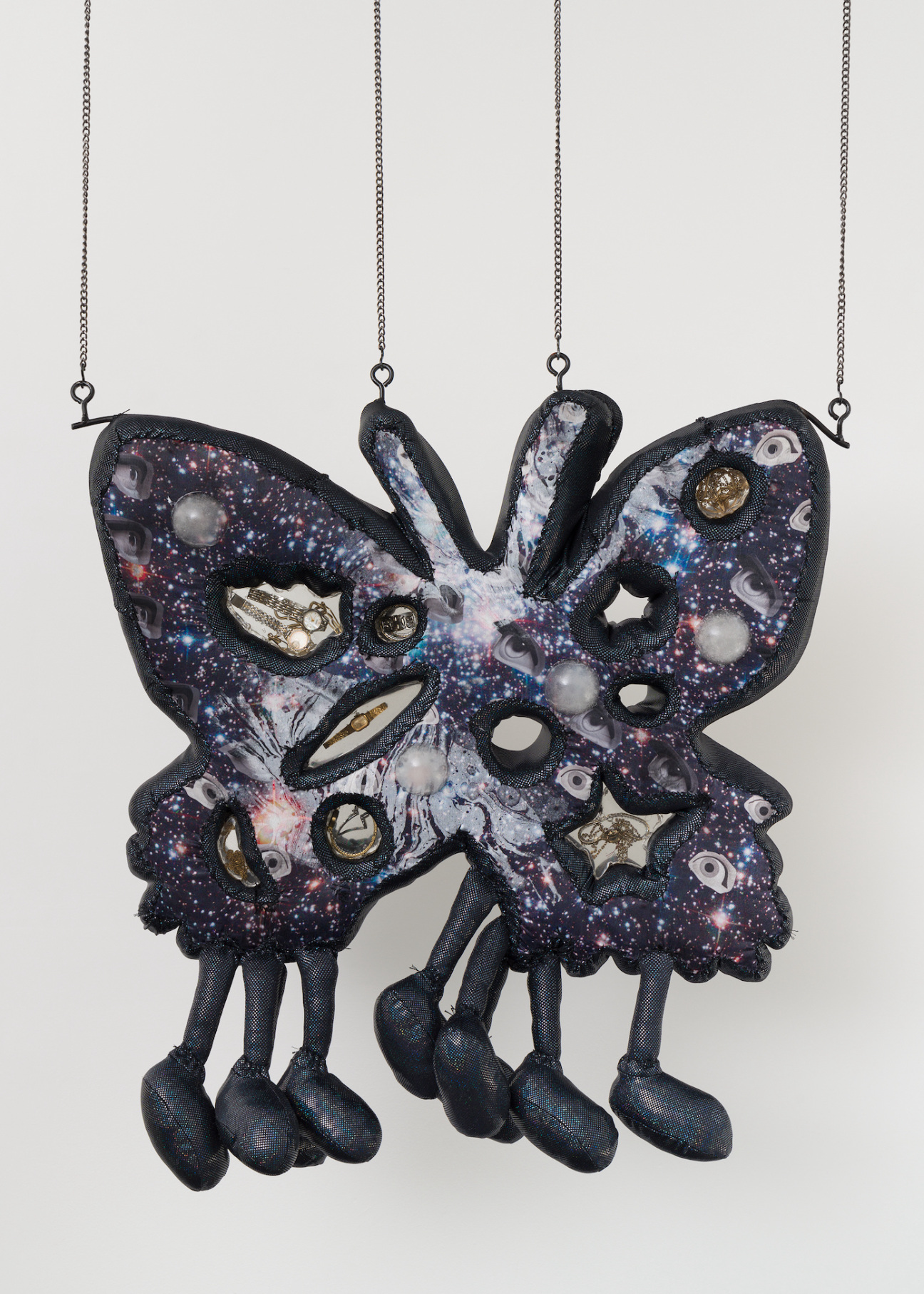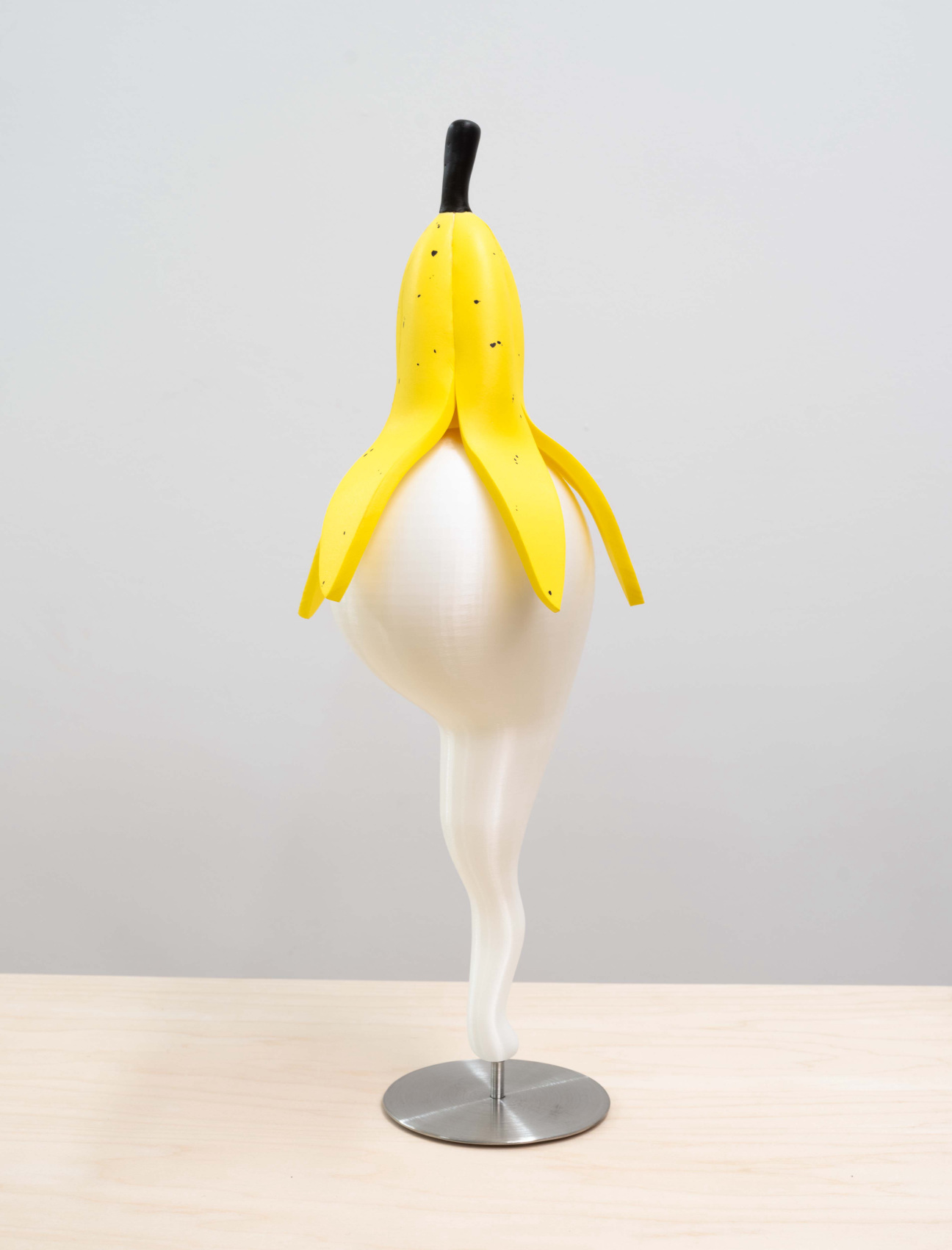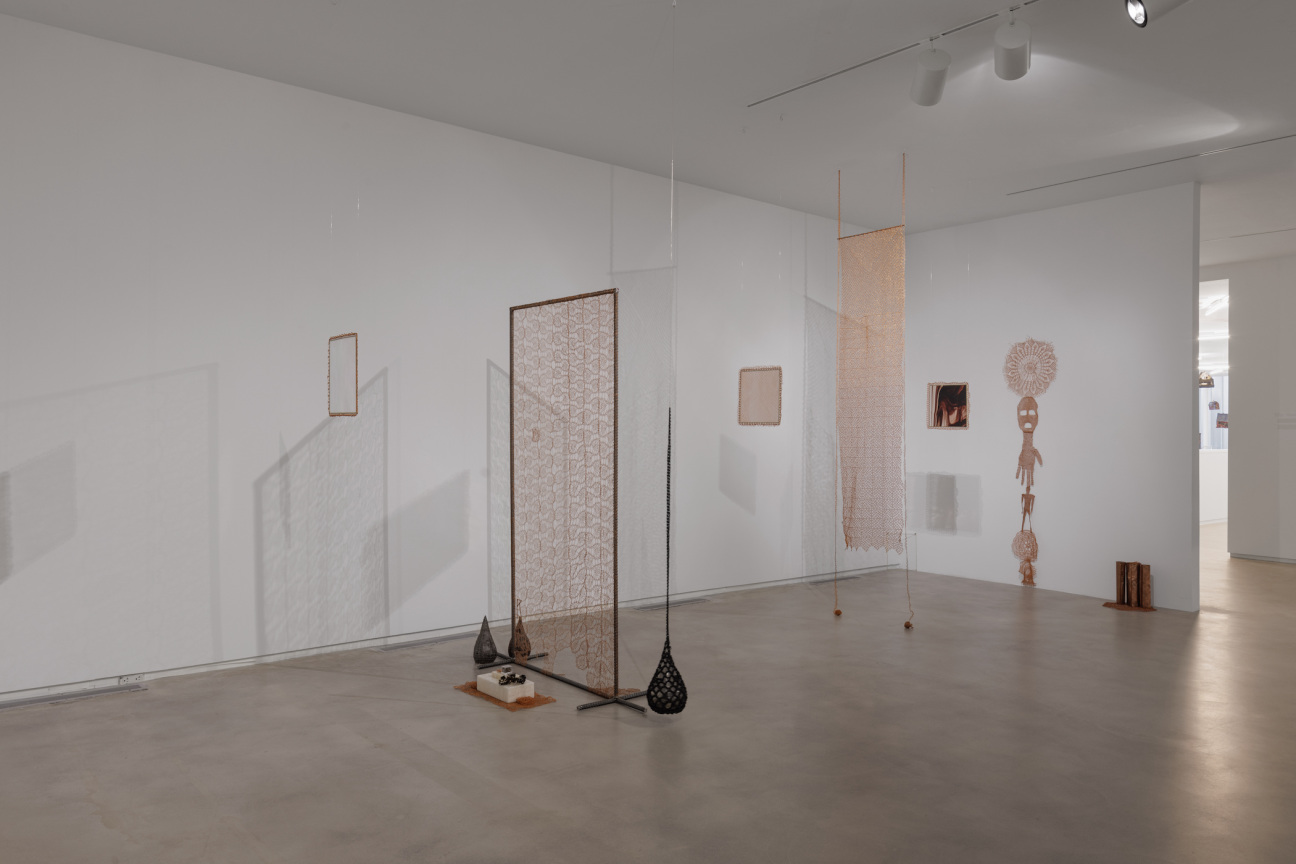There’s a reason sculpture feels like a balm in uncertain times. Hard or soft, abstract or representational, it offers tangible materiality: texture, weight, something to hold. Its invitation to move—its rejection of passive viewing, its demand to be encircled—may be just what we need in this cold, short month. This February, I found myself drawn to the work of sculptors, ranging from mid-career talents deepening their practice to new friends I’m excited to discover. Below, meet five artists who deserve your attention right now.

Manal Kara’s sculptures are the kind you really want to touch. There’s something enigmatic about this work, but also something familiar. The combination of the two stokes our curiosity, calling out for a quick tap or stolen caress.
Based in the Rust Belt city of Gary, Indiana, Kara sources materials from the shifting dunes around Lake Michigan. “There could be a house that was buried in the ‘40s that gets unburied and you find all these car parts and household goods from back then,” they explain. There’s a fluidity to the way Kara, who is self-trained, thinks. Their work is rooted in language and poetry; the sculptures are a manifestation of ideas and words rather than a material investigation or visual experimentation.
Kara’s Unidentified Mathematical Objects (lottery picker 2), a random number generator that looks like a homemade foosball table made from a fur-lined crate, dice, and rows of screwdrivers, is on view until March 2 in the White Columns annual, curated by Randy Kennedy. (It originally appeared in their fall 2023 show at Deli Gallery.) “I was thinking about topology and the interface between physical space and mental space,” Kara says. “What are the shapes of conceptual ideas?”
Kara’s next outing is at M. LeBlanc in Chicago, where they lived for years before moving to Gary. It opens May 31.

If Florencia Escudero isn’t in her Bushwick studio, you might find her in a New Jersey love hotel. She’s been a regular at one in South Amboy since stumbling into the internet subculture of sex dolls after buying a blow-up doll for a sculpture. The purchase tripped the algorithms, the results found their way into the studio, and Escudero began photographing dolls and fetishized prosthetic body parts at the hotel. It’s an act not entirely dissimilar from the earnest documentation shared online by those whose dolls function as real-life objects of desire, romance, and companionship.
Escudero’s large-scale multimedia sculptures may critique the ways in which we sell and consume bodies, but there’s some joy in the outcome. The works are a response to something kind of sad and dark, but Escudero knows there is also fun to be had with sex, fashion, and beauty (occasional drops of her own bespoke designs can be found on her Instagram).
“Sometimes when people encounter my pieces they are disturbed, and others laugh,” says Escudero. “The sculptures have a lot of eyes that look back at the viewer, they are dynamic, with a lot of movement, a lot of attitude. This gives a sense of agency, and maybe that's where the joyous quality comes from.”
On April 26, Escudero will open a two-venue solo show in New York at Rachel Uffner’s upstairs gallery and Kristen Lorello’s uptown space.

From arriving in New York in 2009 with no plan and an overdrawn bank account to taking over Rockefeller Plaza with an Art Production Fund commission in 2019, Detroit-born, Brooklyn-based LaKela Brown is riding her (hard-won) rising star. She’s now represented by downtown darling Ellie Rines of 56 Henry and preparing for her first solo museum show, opening in June at the Museum of Contemporary Art Detroit.
Brown is the rare young artist whose work feels both ancient and contemporary. On one hand, her subjects—bamboo hoop earrings, chicken heads, and rope chains—immediately recall ‘90s urban American culture. On the other hand, her form of choice, the sculptural relief, dates back to antiquity. The inclusion of coins, which are essentially functional mini relief sculptures that span thousands of years, speaks to the timeless quality of her work.
Somewhere in the middle of all this are formal and material considerations that place Brown in conversation with the 20th-century Minimalists. “I’ve never been a found object or ready-made object user,” Brown explains. “The transformation of the object through molding and casting is an important part of the transformation of that object into an art object, especially in the sculptural tradition.”

As soon as I entered Louis Osmosis’s current show at Kapp Kapp in New York, on view through March 9, I regretted not stopping for coffee on my way there. This is a dense exhibition. While it helped to have Osmosis guiding me through it (as well as stanchion ropes that force a singular path through the show), it is one I’ll be processing for a while.
“Every show is just another allegation for me to beat,” says the 27-year-old artist, who already has three solo presentations under his belt. A native New Yorker and Cooper Union alum, Osmosis’s work—highly conceptual multimedia installations that often include found objects—jumps between art history, TikTok, politics, video games, and other fixtures of contemporary digital life with disarming ease.
Osmosis is also funny, though it’s not always clear who the joke is on. In the gallery, a parade of cute, 3D-printed sperm march behind their leader, differentiated from one another by their unique hats—the only elements of the piece made by hand. In a riff on production, reproduction, artistic lineage, and the market, Osmosis quips, “Scarcity is as produced and as bespoke as any of these hats.”

I first heard about ektor garcia from another artist who had arrived in New York as a refugee. He told me about how garcia helped him sneak into university studios he had access to so he could continue to work. This generous gesture became foundational to my understanding of garcia’s art.
Using traditional Mexican craft techniques, garcia’s sculptures often hang from the ceiling or high on a wall, falling through space. “ektor is a master craftsman, across material and processes—crocheted copper wire, welded metal, woven leather and sinew, ceramics, glass—he is adept in every element,” says his San Francisco gallerist Rebecca Camacho.
Though the details of garcia’s contribution to the upcoming Whitney Biennial, which opens March 20, are a closely guarded secret, you can still catch his installation in "Intimate confession is a project" at the Blaffer Art Museum in Houston through March 10. Later this year, he’ll have shows with Adams and Ollman in Portland and Mendes Wood DM in São Paulo. Next year, he opens a solo show at the San Jose Museum of Art, curated by Lauren Schell Dickens. Where he’ll be in between is anyone’s guess.










 in your life?
in your life?

